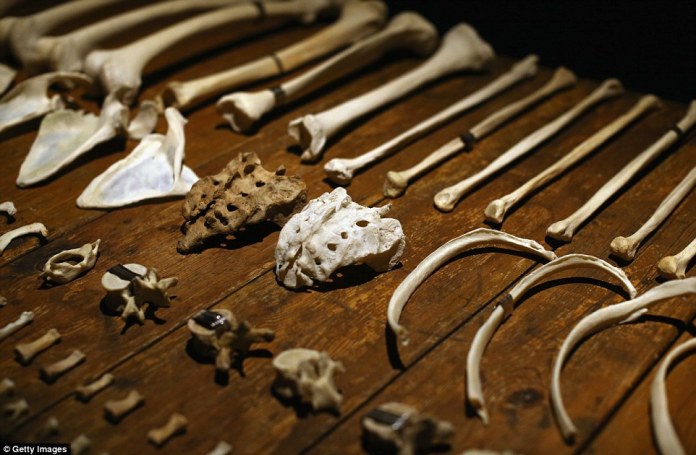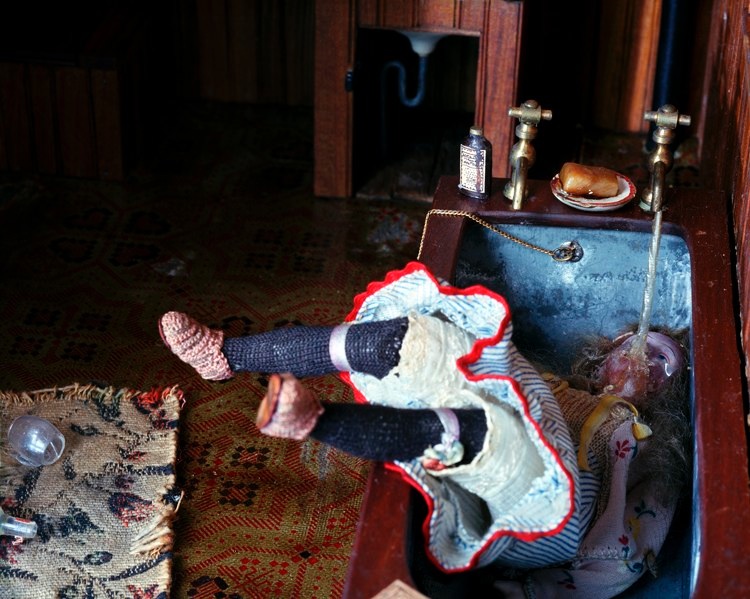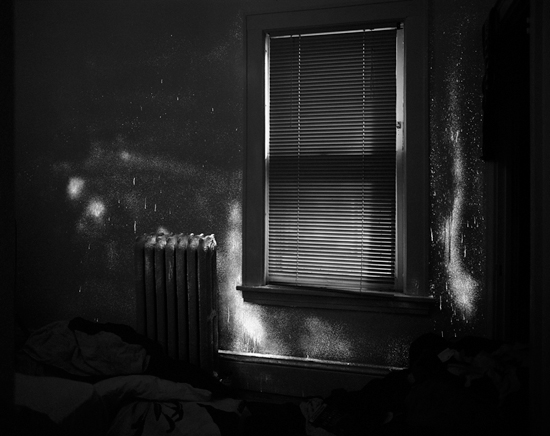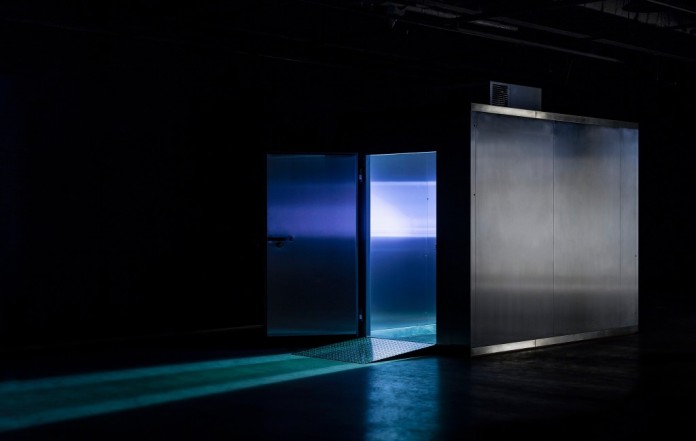Art and science mix in this boldly curated take on multi-layered forms of evidence.
What is interesting about the Forensics: The Anatomy of Crime exhibition at the Wellcome Collection is the interweaving of science and art, allowing connections and highlighting differences, between the intentions of the artist and evidence gathered from crime scenes. In both cases there is room for dialogue between the viewer and the object. However, evidence gathered by crime scene examiners is in some sense mute until it is given meaning and context in a court of law. Visual artists, in comparison, generate their own sense of context and create an internal dialogue with the work before it is placed in the public realm of the exhibition.
This exhibition of material inspired by and derived from the investigation of crime, creates a tension whereby the artist appears to be substantiated and re-enforced by a proximity to the tools of science and evidence gathering. Corinne May Botz’s photographs entitled ‘Nutshell Studies’ offer a satisfying and successful embodiment of this relationship. They are shrunken recreations of actual murder scenes used by forensic trainers to teach new officers ways of interpreting crime. They are also powerfully subversive in their illustration of an innocent object twisted in form and function, which seems to mirror in some ways an innocent object manipulated, in the assailant’s hands for example, to become a lethal object.

The Nutshell Studies of Unexplained Death” is an exploration of a collection of eighteen miniature crime scene models that were built in the 1940’s and 50’s by a progressive criminologist Frances Glessner Lee (1878 – 1962)
Angela Strassheim’s ‘Evidence’ monochrome photograph, re-appropriates forensic methodology for aesthetic effect. The ex-Police Photographer visits historic sites of violent murder – homes now occupied by new and unwitting owners – and searches for latent evidence still lingering on the walls and around door-frames. The resulting image records the ghostly glow produced by a chemical called ‘Luminol’ as it reacts with traces of contaminant present in the room. The presumption is that this is a reaction with the haemoglobin in blood, but in this context, the finer points of interpretation are masked and diminished by the picture’s ambiguity. Appearing to show evidence that cannot be substantiated, this picture shows the power of the photograph on the one hand – in its ability to render the invisible visible – but also the fragility of the image as a depiction of the empirical truth.
In a reverential ode-to-the-dead, natural processes of decay are represented in Sally Mann’s enigmatic, faceless corpse at the Tennesee Anthropological Centre, aka ‘The Body Farm’. Equally enthralling are acutely observed and luxuriously rendered illustrations from the 13th century – apparently in the Buddhist tradition – showing the nine stages human body decomposition – from pre-death portrait through to tumulus – an innocent looking grassy mound.
![L0070296 Kusozu: the death of a noble lady and the decay of her body. Credit: Wellcome Library, London. Wellcome Images images@wellcome.ac.uk http://wellcomeimages.org Kusozu: the death of a noble lady and the decay of her body. Final painting in a series of 9 watercolour paintings. The final image is of a memorial structure upon which her Buddhist death-name is inscribed in Sanskrit. Watercolour Published: [17--?] Copyrighted work available under Creative Commons Attribution only licence CC BY 4.0 http://creativecommons.org/licenses/by/4.0/](https://djnorwood.files.wordpress.com/2015/06/grassy-mound1.jpg?w=696&h=559)
Kusozu: the death of a noble lady and the decay of her body.
Final painting in a series of 9 watercolour paintings.
The final image is of a memorial structure upon which her Buddhist death-name is inscribed in Sanskrit.
Watercolour
 Similarly, the care taken to present the bones in Jenny Holzer’s Lustmord (above) deliberately undermine the violence and careless demise of these victims of sexual crime. The silver tags on finger bones which once wore adornments more comfortably, are etched with ‘unsettling perspectives on sexual violence from perpetrators, victims and observers’. The instillation is protected behind an alarmed barrier, affording the victims more protection in death than they ever had in life. In an adherence of the term ‘forensic’ – meaning ‘of the forum’ – these inscribed ‘voices’ are made mute by their position within a very specific space and time.
Similarly, the care taken to present the bones in Jenny Holzer’s Lustmord (above) deliberately undermine the violence and careless demise of these victims of sexual crime. The silver tags on finger bones which once wore adornments more comfortably, are etched with ‘unsettling perspectives on sexual violence from perpetrators, victims and observers’. The instillation is protected behind an alarmed barrier, affording the victims more protection in death than they ever had in life. In an adherence of the term ‘forensic’ – meaning ‘of the forum’ – these inscribed ‘voices’ are made mute by their position within a very specific space and time.
The showpiece of the exhibition, however, is the instillation by artist Sejla Kameric, located in the ‘Search’ section. Inside this solid silver box – a working refrigeration unit normally used in temporary morgues – a projector flashes images of evidence collected in the process of identifying recovered human remains, or Disaster Victim Identification (DVI) in Police jargon. Walking into the unit is a humbling experience. The cold air and drone of the generator are an unsettling distraction, but add a sense of brutal authenticity to the stark representation of hard facts.
This giant industrial cooler embodies the act of scene and evidence preservation in order, as a moral stance it seems, for future generations to find solutions to old problems. The refrigeration process keeps fresh those ugly things, which require revisiting and re-examining, after and beyond eyes tired and jaded.



Great review! This might have been my favourite exhibition of 2015.
LikeLike
Thanks! @CDNesbitt Maybe I should get back into it after a bit of a hiatus!
LikeLike